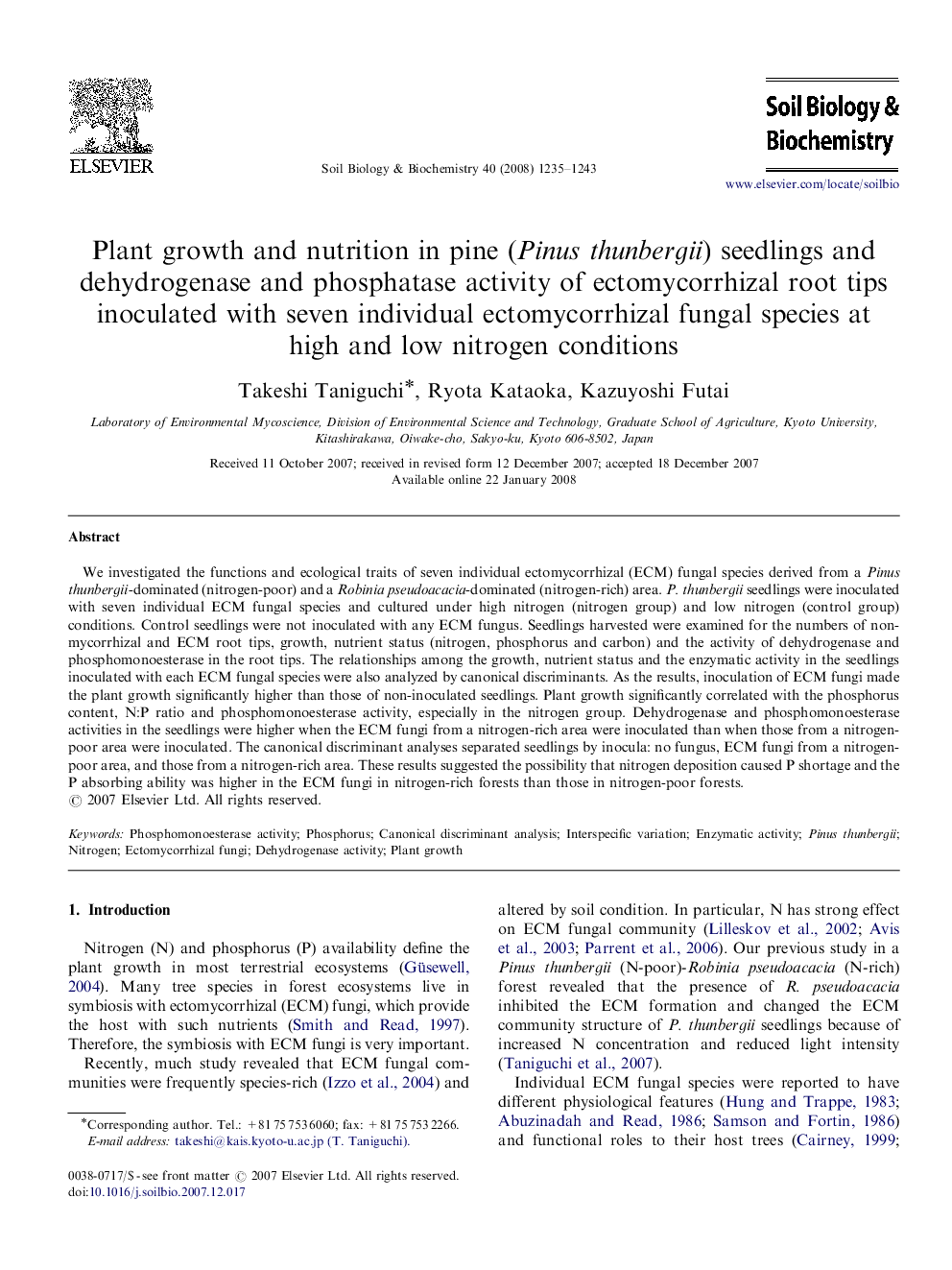| Article ID | Journal | Published Year | Pages | File Type |
|---|---|---|---|---|
| 2026039 | Soil Biology and Biochemistry | 2008 | 9 Pages |
We investigated the functions and ecological traits of seven individual ectomycorrhizal (ECM) fungal species derived from a Pinus thunbergii-dominated (nitrogen-poor) and a Robinia pseudoacacia-dominated (nitrogen-rich) area. P. thunbergii seedlings were inoculated with seven individual ECM fungal species and cultured under high nitrogen (nitrogen group) and low nitrogen (control group) conditions. Control seedlings were not inoculated with any ECM fungus. Seedlings harvested were examined for the numbers of non-mycorrhizal and ECM root tips, growth, nutrient status (nitrogen, phosphorus and carbon) and the activity of dehydrogenase and phosphomonoesterase in the root tips. The relationships among the growth, nutrient status and the enzymatic activity in the seedlings inoculated with each ECM fungal species were also analyzed by canonical discriminants. As the results, inoculation of ECM fungi made the plant growth significantly higher than those of non-inoculated seedlings. Plant growth significantly correlated with the phosphorus content, N:P ratio and phosphomonoesterase activity, especially in the nitrogen group. Dehydrogenase and phosphomonoesterase activities in the seedlings were higher when the ECM fungi from a nitrogen-rich area were inoculated than when those from a nitrogen-poor area were inoculated. The canonical discriminant analyses separated seedlings by inocula: no fungus, ECM fungi from a nitrogen-poor area, and those from a nitrogen-rich area. These results suggested the possibility that nitrogen deposition caused P shortage and the P absorbing ability was higher in the ECM fungi in nitrogen-rich forests than those in nitrogen-poor forests.
